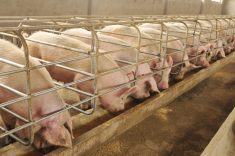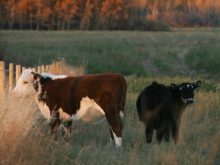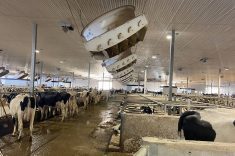RED DEER – Farmers who direct seed can’t ignore crop rotations, says a soil conservation co-ordinator with Alberta Agriculture.
John Zylstra told a recent FarmTech 2000 conservation conference that a well-balanced rotation of pulses, forages and cereals make substantial differences in soil tilth, fertility and subsequent yields.
Zylstra is involved in a long-term study of crop rotations that started in 1992. The project’s rotations are three-years long, even though many minimum tillage farmers use longer rotations.
The study has found that wheat averaged 25 bushels per acre when grown on a former pea field. This compares to 20 bu. per acre yields when wheat was grown on a field left fallow for a year. Also, wheat following canola or peas outyielded continuous wheat by 12 bu. per acre.
Read Also

VIDEO: British company Antler Bio brings epigenetics to dairy farms
British company Antler Bio is bringing epigenetics to dairy farms using blood tests help tie how management is meeting the genetic potential of the animals.
Researchers found legumes like alfalfa and pulses supply nutrients to the soil and its ability to nurture future crops.
The legumes add late-season nitrogen that builds a higher protein level in a cereal crop grown the following year. This can lower commercial nitrogen fertilizer use.
Adding forages to rotations also breaks disease cycles and is a better practice than burying disease in the soil, as can happen with conventional tillage.
Forages also help control weeds like wild oats and Canada thistle by outcompeting the unwanted plants.
Forage stands can be plowed down after a few years and still produce beneficial results.
“A three-year forage is optimum.”
For example, the most beneficial way to design a 12-year rotation could be three years of alfalfa, three years of cereals followed by three years of forage and then cereals again.
Forages can be direct seeded into annual crops. However, seeding annuals into a former grass or legume stand can cause a volunteer forage problem.
For instance, planting cereals into bromegrass can work, but the grass must be sprayed down in the fall or too many volunteer plants can appear the following year.

















